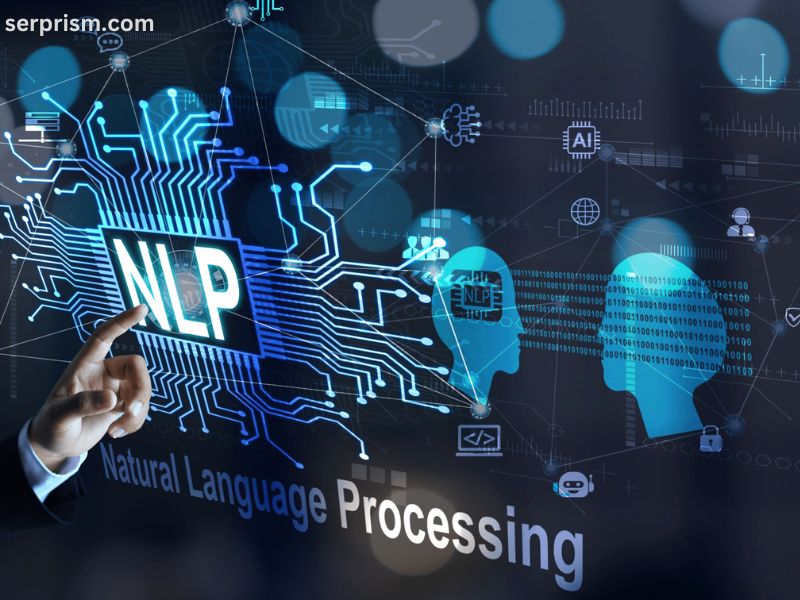
In the rapidly evolving field of Natural Language Processing (NLP), innovations are continually being introduced to enhance the performance of models and algorithms. One such innovation is the concept of “Rank-One Update.” While this term might sound technical, its implications for NLP are profound, affecting everything from model optimization to the efficiency of computations. This article delves deep into what Rank-One Update is, its significance in NLP, and how it is applied to enhance various NLP tasks.
Understanding Rank-One Update
At its core, a Rank-One Update refers to a mathematical operation that modifies a matrix by adding or subtracting an outer product of two vectors. This operation is particularly significant in linear algebra and is commonly used in optimization algorithms and machine learning models. The update is termed “rank-one” because the outer product of two vectors results in a matrix with a rank of one.
To understand this better, let’s break it down:
- Matrix: A matrix is a rectangular array of numbers, symbols, or expressions, arranged in rows and columns. Matrices are fundamental in linear algebra and are used to represent data or transformations.
- Outer Product: The outer product of two vectors (say, uu and vv) results in a matrix where each element is the product of the corresponding elements of the two vectors. If uu is a vector of size mm and vv is a vector of size nn, their outer product u×vTu \times v^T will be an m×nm \times n matrix.
- Rank-One Matrix: A matrix is said to have rank one if it can be expressed as the outer product of two vectors. Such matrices are the simplest non-trivial matrices, as they encapsulate a single linear relationship between their rows and columns.
A Rank-One Update involves modifying an existing matrix AA by adding or subtracting a rank-one matrix formed by the outer product of two vectors uu and vv. Mathematically, this can be represented as:
A′=A+u×vTA’ = A + u \times v^T
Here, A′A’ is the updated matrix, uu and vv are vectors, and u×vTu \times v^T is their outer product.
Rank-One Update in NLP
NLP tasks often involve working with large matrices, such as word embeddings, attention matrices, and other parameters within neural networks. Efficiently updating these matrices is crucial for improving the performance and scalability of NLP models. This is where Rank-One Updates come into play.
- Optimization and Gradient Descent: In training NLP models, optimization algorithms like gradient descent are used to minimize a loss function. Rank-One Updates can be applied to adjust the weight matrices of the model during training. By using a Rank-One Update, the model can efficiently update its parameters without the need for computationally expensive full-rank updates. This can lead to faster convergence and more efficient training.
- Low-Rank Approximations: NLP models often require large matrices to represent complex relationships between words, sentences, or documents. However, these matrices can be approximated using low-rank matrices to reduce computational complexity. Rank-One Updates are instrumental in constructing these low-rank approximations, allowing models to maintain high performance while using fewer resources.
- Attention Mechanisms: Attention mechanisms, especially in transformer models, rely on large matrices to calculate the importance of different words in a sentence. Rank-One Updates can be used to dynamically adjust these attention matrices, enabling the model to focus on the most relevant parts of the input more efficiently.
- Singular Value Decomposition (SVD): SVD is a powerful technique in linear algebra that decomposes a matrix into three other matrices, highlighting its singular values and vectors. In NLP, SVD is used for tasks like dimensionality reduction and topic modeling. Rank-One Updates can be used to efficiently update the SVD of a matrix, which is useful when the matrix is subject to frequent small changes, such as in dynamic text corpora.
- Word Embeddings: Word embeddings are vector representations of words that capture semantic similarities between them. When new words or documents are added to a corpus, Rank-One Updates can be used to update the embedding matrix without the need to recompute the entire matrix from scratch. This makes the embedding process more scalable and adaptable to new data.
- Fine-Tuning Pretrained Models: Pretrained models like BERT or GPT often need to be fine-tuned for specific tasks. Fine-tuning involves adjusting the parameters of the model based on new data. Rank-One Updates can be used to make these adjustments efficiently, enabling faster and more effective fine-tuning processes.
Benefits of Rank-One Updates in NLP
The use of Rank-One Updates in NLP comes with several key benefits:
- Computational Efficiency: Rank-One Updates are computationally less expensive than full-rank updates, making them ideal for large-scale NLP tasks. They reduce the time and resources needed for training and inference, which is crucial in real-time applications.
- Scalability: NLP models often need to scale to handle large datasets or to be deployed in environments with limited computational resources. Rank-One Updates allow models to scale more effectively by reducing the complexity of matrix operations.
- Dynamic Adaptation: In many NLP applications, the data is dynamic and constantly changing. Rank-One Updates allow models to adapt to new data on the fly without the need for extensive retraining. This is particularly useful in applications like recommendation systems, where user preferences change over time.
- Enhanced Model Interpretability: By focusing on low-rank approximations and updates, Rank-One Updates can make models more interpretable. For example, in topic modeling, a low-rank approximation can highlight the most significant topics in a corpus, making it easier to understand the underlying structure of the data.
- Improved Convergence: In optimization algorithms, Rank-One Updates can lead to faster convergence by making small, precise adjustments to the model parameters. This can result in quicker training times and better model performance.
Applications of Rank-One Update in NLP
The Rank-One Update method is applicable across various NLP tasks and models. Here are a few examples:
- Topic Modeling: In topic modeling, Rank-One Updates can be used to iteratively refine the topic distribution matrix as new documents are added to the corpus. This enables the model to adapt to new data without the need to recompute the entire topic distribution.
- Sentiment Analysis: Sentiment analysis models often use large matrices to represent the relationships between words and sentiments. Rank-One Updates can be used to adjust these matrices as new training data becomes available, allowing the model to quickly adapt to new sentiment trends.
- Machine Translation: In machine translation, Rank-One Updates can be used to fine-tune translation matrices as new bilingual data is added. This can improve the quality of translations by allowing the model to adapt to new linguistic patterns.
- Recommender Systems: Recommender systems rely on matrix factorization techniques to predict user preferences. Rank-One Updates can be used to efficiently update the user-item interaction matrix as new user interactions are recorded, improving the accuracy of recommendations.
- Document Summarization: In document summarization, Rank-One Updates can be applied to adjust the matrix representing the importance of different sentences in a document. This allows the summarization model to dynamically adapt to different types of documents and generate more accurate summaries.
- Text Classification: Rank-One Updates can be used to fine-tune the weight matrices in text classification models as new labeled data becomes available. This allows the model to quickly adapt to new classes or changes in the distribution of classes.
Challenges and Considerations
While Rank-One Updates offer numerous benefits, there are also challenges and considerations to keep in mind:
- Numerical Stability: In some cases, repeated Rank-One Updates can lead to numerical instability, especially when dealing with very large matrices. Care must be taken to ensure that the updates do not introduce significant errors.
- Sparsity: NLP models often deal with sparse matrices, where most elements are zero. Applying Rank-One Updates to sparse matrices can be challenging, as the update may introduce non-zero elements that increase the complexity of the matrix.
- Interpretability: While Rank-One Updates can enhance model interpretability, they can also complicate it if not applied carefully. It’s important to ensure that the updates align with the underlying semantics of the data.
- Hyperparameter Tuning: The effectiveness of Rank-One Updates can depend on hyperparameters such as the learning rate and the choice of vectors uu and vv. Proper tuning of these parameters is essential for achieving optimal results.
Conclusion
Rank-One Update is a powerful and efficient technique in NLP that enables dynamic adaptation, scalability, and computational efficiency in a wide range of applications. Whether it’s optimizing word embeddings, fine-tuning pretrained models, or enhancing attention mechanisms, Rank-One Updates provide a valuable tool for improving the performance and scalability of NLP models.
As NLP continues to evolve, the use of Rank-One Updates is likely to become increasingly prevalent, especially in applications that require real-time processing and adaptation to new data. By understanding and leveraging this technique, NLP practitioners can build more efficient and effective models that are better suited to the demands of modern language processing tasks.




